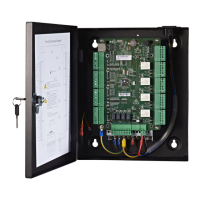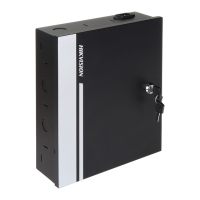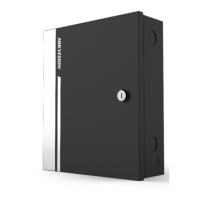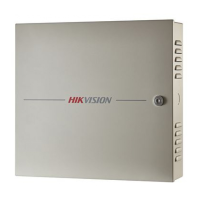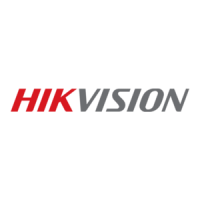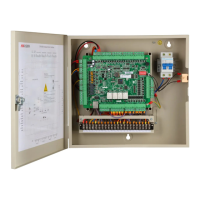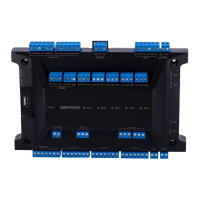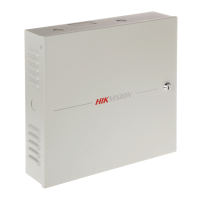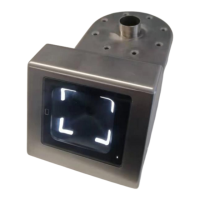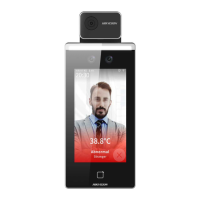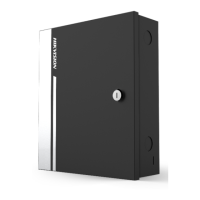
Do you have a question about the HIKVISION DS-K2801 and is the answer not in the manual?
| Product type | Access controller |
|---|---|
| Certification | CE, FCC |
| Compatibility | Wiegand |
| Mounting type | Wall |
| Product color | Black |
| Brand compatibility | Hikvision |
| Operating temperature (T-T) | -20 - 65 °C |
| Quantity per pack | 1 pc(s) |
| Depth | 285 mm |
|---|---|
| Width | 237 mm |
| Height | 69 mm |
Details regulatory compliance for FCC standards.
Outlines the conditions for FCC compliance of the device.
States compliance with European standards and directives.
Specifies compliance with Industry Canada standards.
Critical safety precautions to prevent serious injury or death.
Important precautions to prevent potential injury or material damage.
Introduces the DS-K2800 as a powerful and stable access controller.
Lists the key functionalities and capabilities of the DS-K2800 series.
Details the terminal connections for the DS-K2801 model.
Details the terminal connections for the DS-K2802 model.
Details the terminal connections for the DS-K2804 model.
Explains how to connect various types of card readers to the controller.
Guides on connecting external alarm devices to the system.
Illustrates the wiring for connecting a door button.
Details the connection for magnetic detection sensors.
Provides instructions for connecting the power supply to the device.
Describes the process for initializing the device hardware to default settings.
Explains the configuration of relay inputs and outputs for Normally Open/Closed states.
Step-by-step guide to activate the device using SADP software.
Overview of the functional modules available in the client software.
Instructions for registering and logging into the client software.
Procedures for configuring system settings, including event synchronization.
Overview of managing access control devices and operations.
How to check the real-time status of connected devices.
Process for modifying the basic information of a device.
Steps for configuring device settings remotely.
Settings for network configuration, including IP and port details.
Advanced network settings such as DNS and alarm host configuration.
Details on configuring relay parameters and their settings.
Managing user information, organizations, and issuing cards.
Setting up and applying access control permissions for users.
Configuring advanced features like access control parameters and card reader settings.
